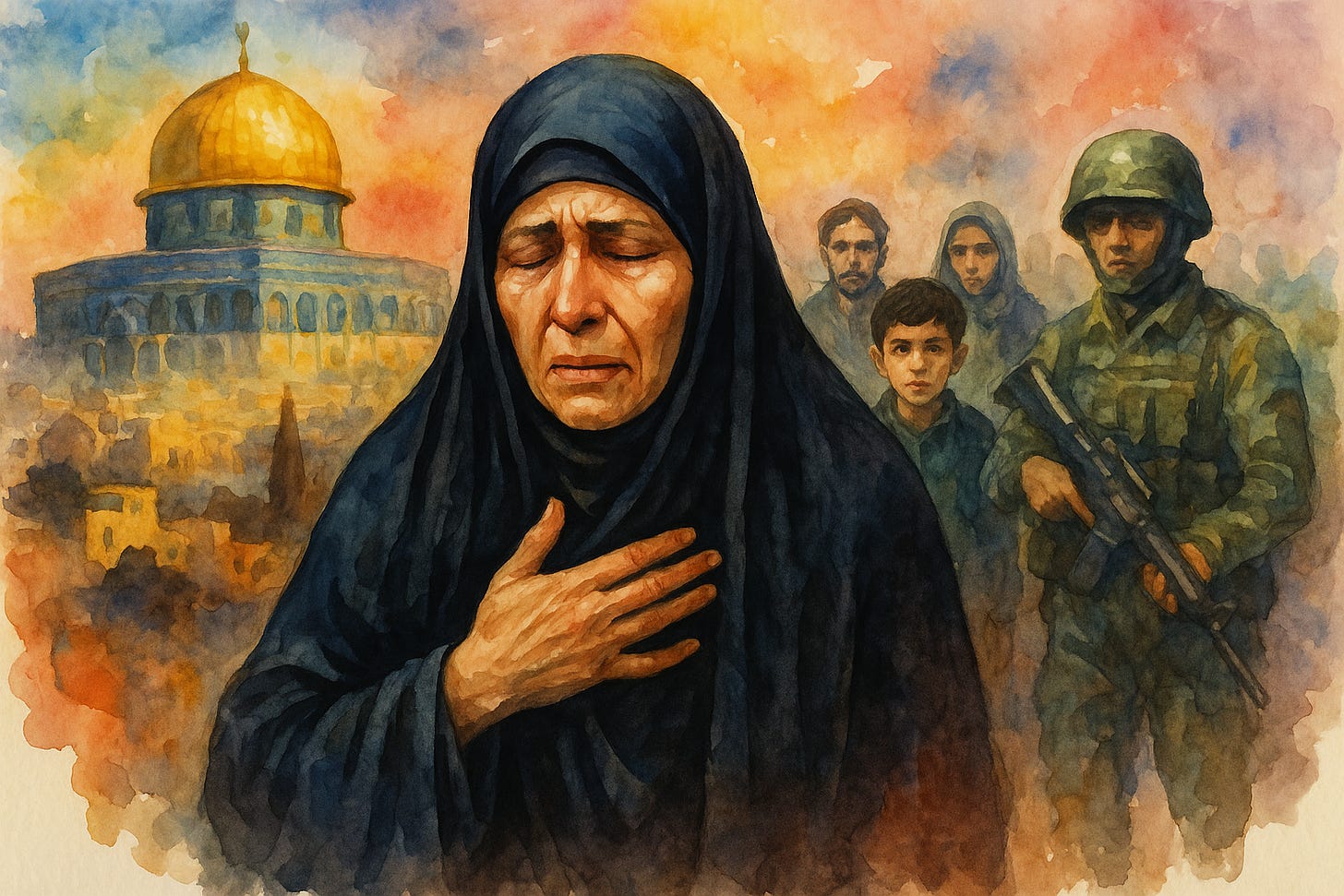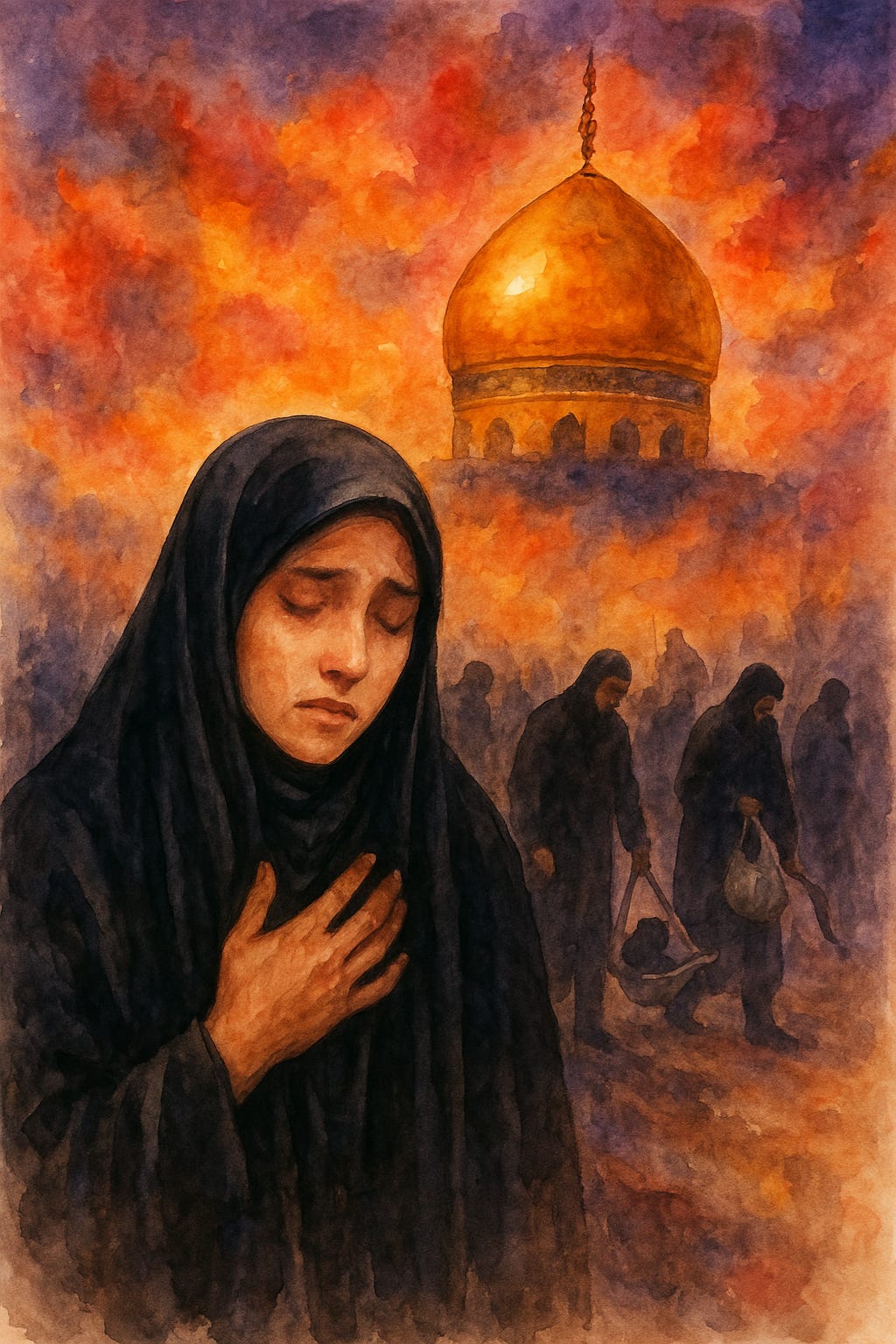Azadari: A Living Protest Against Injustice
From the Sands of Karbala to the Struggles of Palestine and Kashmir
Azadari—the mourning and remembrance of Imam Husayn (AS), his family, and his companions—is not merely a ritual. It is a deeply spiritual and revolutionary act that defines the Shia soul and preserves the essence of Islam. More than 1,300 years since the tragedy of Karbala, Azadari continues to echo through history, not as a sorrow bound by time, but as a banner of resistance against tyranny, injustice, and silence.
Drawing on the foundational texts “The Philosophy of Azadari” and “Janab Zainab (A.S.), Who Laid the Foundation of Azadari”, we uncover how Azadari, while rooted in sacred history, offers a powerful lens through which the modern-day oppression in Palestine, Kashmir, Yemen and across the world can be understood—and challenged.
🕊️ Azadari: A Divine Trust from the Prophet’s Household
The seeds of Azadari were sown by none other than the Prophet Muhammad (S) himself, when he informed Lady Fatima (AS) of the impending martyrdom of her son Husayn. In her grief, she was consoled by the knowledge that righteous believers would weep for Husayn until the end of time. This mourning is not a passive tradition—it is a divinely-ordained inheritance that allows each generation to align themselves with truth and justice.
Imam al-Sadiq (as) said:
“He who remembers us, or in whose presence we are remembered, and his eyes shed even a drop of tears, Allah will build for him a house in Paradise.”
(Wasā’il al-Shīʿa, vol. 10)
📖 Quranic Foundations and Sacred Symbols
Azadari is not innovation—it is devotion rooted in revelation. The Holy Quran states:
“That [is so]. And whoever honours the symbols of Allah—indeed, it is from the piety of hearts.”
(Quran, Surah al-Hajj, Chapter 22, The Pilgrimage, Verse 32)
The banners of Abbas (AS), the cradle of Ali Asghar (AS), the empty tents, and the soil of Karbala—these are not to be worshipped, but honoured as signs pointing to divine struggle.
As Allah swears “by the hooves of the horses that gallop in His path” (Quran, Surah al-Adiyat, Chapter 100, The Coursers, Verse 1–5);
So too do we honour the traces of Karbala, where blood was shed to revive the spirit of Islam.
🕯️Lady Zainab (A.S.): The Voice that Defied Tyranny
If Karbala was the battlefield, Shaam was the microphone.
Lady Zainab (A.S.)—the towering figure of courage—tore through the silence of oppression with speeches that shook the palaces of falsehood. In Kufa and Damascus, she exposed Yazid’s crimes and revived the conscience of a broken Ummah. Upon returning to Medina, she gathered women and began the first Majalis—planting the seeds of Azadari that would blossom into a global movement.
Her mission was not just to grieve—but to resist.
🛑 Azadari as a Conscience for the Oppressed: From Karbala to Gaza and Kashmir
Azadari teaches us that silence is betrayal. When we remember Karbala, we are reminded that neutrality in the face of oppression is complicity.
Today, Palestine bleeds under occupation. Children are bombed, hospitals razed, journalists silenced. In Kashmir, people are denied dignity, autonomy, and even the right to mourn freely. These tragedies are not distant from Karbala—they are its continuation.
The enemies may change their uniforms, but the philosophy of Yazid remains: suppress the truth, punish the pious, and weaponise propaganda.
Azadari stands in opposition to all of it.
Imam Husayn (AS) said on the Day of Ashura:
“I have not risen to spread evil or show off. I only desire to reform the Ummah of my grandfather… and to enjoin the good and forbid the evil.”
(Bihar al-Anwar, vol. 44)
To mourn Husayn is to oppose every Yazid—whether in the court of Shaam or in the rubble of Gaza.
🕌 Azadari Builds Resistance and Revives Faith
When a community gathers to weep for Husayn, it is not retreat—it is preparation. Azadari strengthens spiritual identity, renews moral courage, and unites hearts around a shared cause: the defence of justice and truth.
It is through these gatherings that generations learn who the Ahlul Bayt (AS) are, what they stood for, and why we must never bow to tyrants—no matter how powerful they appear.
In the words of Imam Khomeini (RA):
“Whatever we have is from Ashura and the sacrifices of Imam Husayn.”
❤️ Azadari: Faith, Allegiance, and Revolution
Imam Muhammad al-Baqir (AS) declared:
“The love of us, Ahlul Bayt, is faith. And the hatred of us is kufr (disbelief).”
(al-Kāfī, vol. 2, p. 75)
Azadari is an act of love, but also of rebellion—a declaration that we stand with Husayn and reject every Yazid. It is a commitment to uphold justice, speak the truth, and never forget the martyrs of Karbala—or the martyrs of our own time.
📢 Conclusion: Let Every Tear Be a Sword
Azadari is not simply crying—it is a call to action. Each tear shed for Husayn is a blade sharpened against injustice. Each beating chest is a drum declaring allegiance to truth.
To commemorate Husayn (AS) while ignoring Palestine or Kashmir is to miss the point of Azadari. Let our Majalis be not only a place of remembrance but a rallying cry for all who suffer today—just as Lady Zainab (A.S.) turned grief into defiance.
Because as long as there is oppression in the world,
Karbala is not over.



